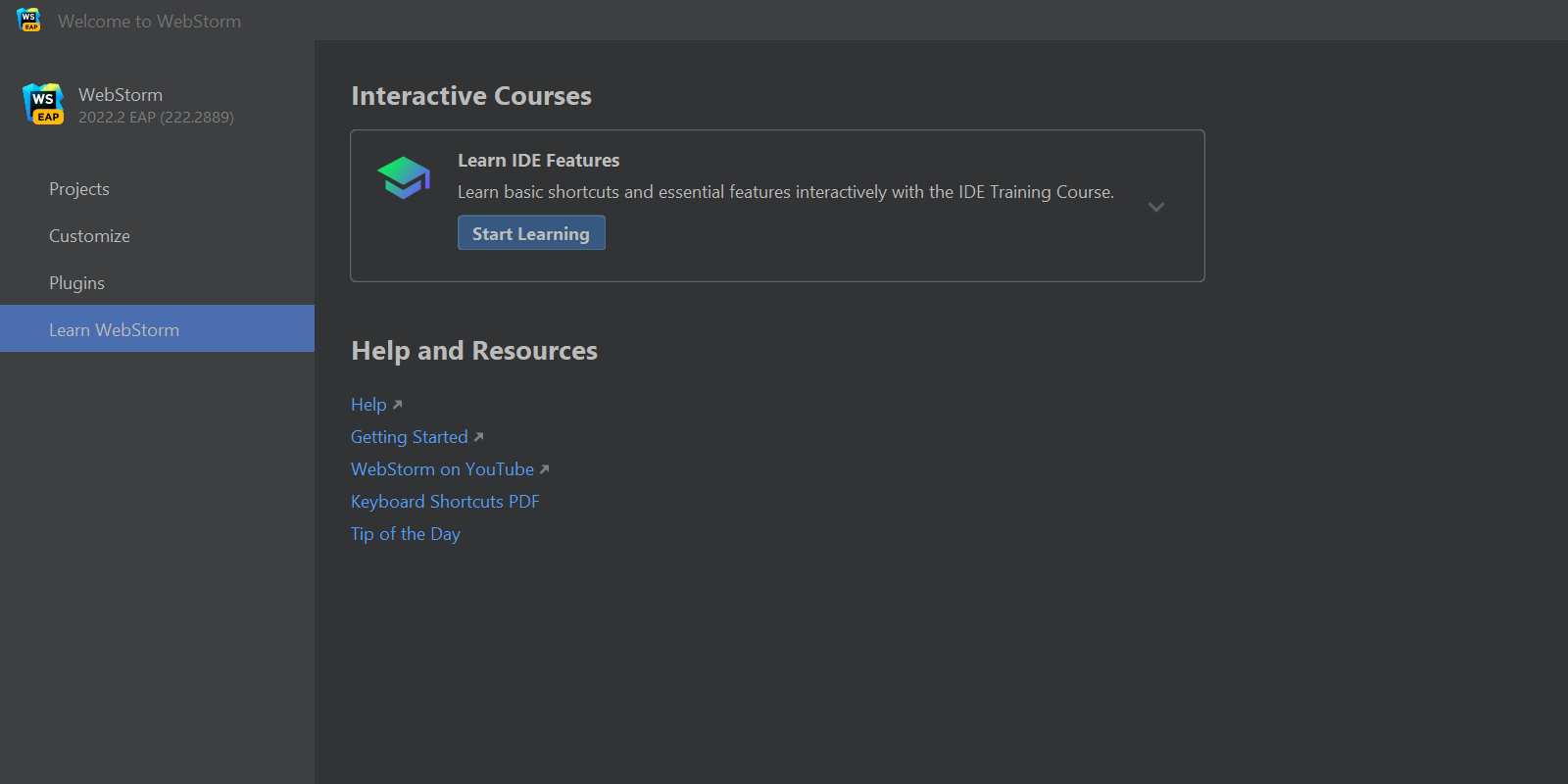Introducing the Learning Plugin for WebStorm
Getting familiar with a product can take time. This is why we’ve created an interactive training course to help you learn how to perform typical day-to-day tasks in WebStorm, such as refactoring code and navigating through your projects. This course is available as a plugin.
Start learning
To get started, first, you’ll need to install the learning plugin. Go to Preferences / Settings | Plugins, search for IDE Features Trainer, and install the plugin. You’ll need to restart the IDE, and then you’ll see a new Learn IDE Features section available under the Learn WebStorm tab on the Welcome screen. Click the Start Learning button to begin. You can also access the IDE Features Trainer at any time from the main menu using Help | Learn IDE Features.

Please note that the IDE Features Trainer plugin is already bundled in some earlier versions of WebStorm, so you might not need to install this plugin.
Next, you’ll see the Learn tool window, which includes all the available modules. To start learning, click on a module you find interesting.

The training course was designed to help people who are new to WebStorm. But if you’re an experienced WebStorm user and you feel like checking it out, please be our guest! We’d be happy to learn whether the Feature Trainer is helpful to users already familiar with WebStorm.
What’s included in the training course?
The training course has three modules:
- Editor Basics. By taking five short lessons in this module, you can learn how to save time on everyday tasks. You’ll learn how to use code completion and refactorings, edit your code with multiple carets, quickly navigate through your projects, and more. If you only have time to complete one of the three modules, we recommend prioritizing this one.
- Getting Started with Testing. This is the shortest module, consisting of only one lesson. It explains the fundamentals of unit testing in WebStorm using the popular Jest framework as an example.
- WebStorm Debugger 101. This module will give you an overview of running and debugging programs with Node.js in WebStorm. It’s most useful for those who have previously used the debugging capabilities of other IDEs and would like to know how the debugger in WebStorm is different.
We encourage you to share your feedback with us! Just leave a comment below or create an issue here.
The WebStorm team
Subscribe to WebStorm Blog updates






